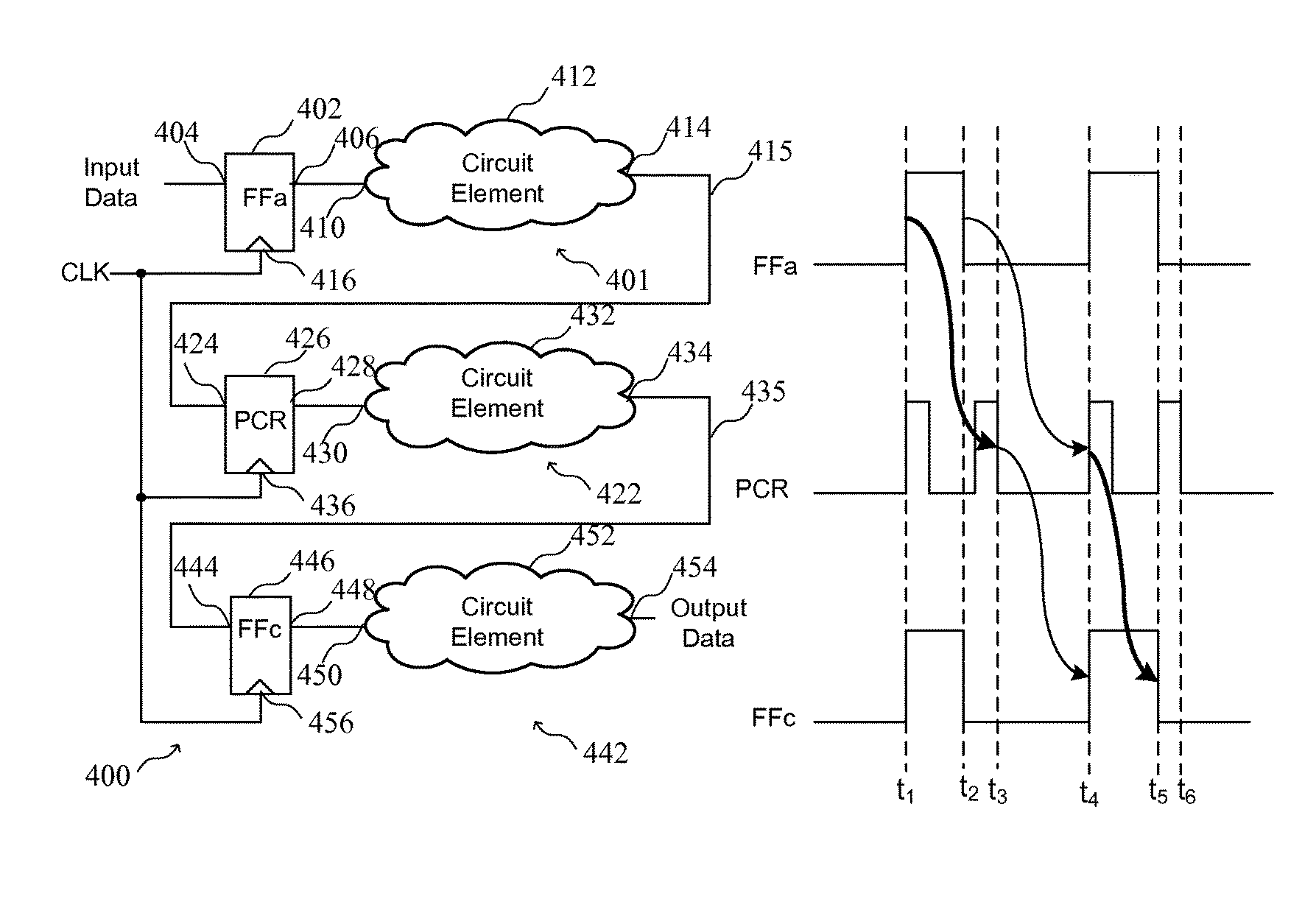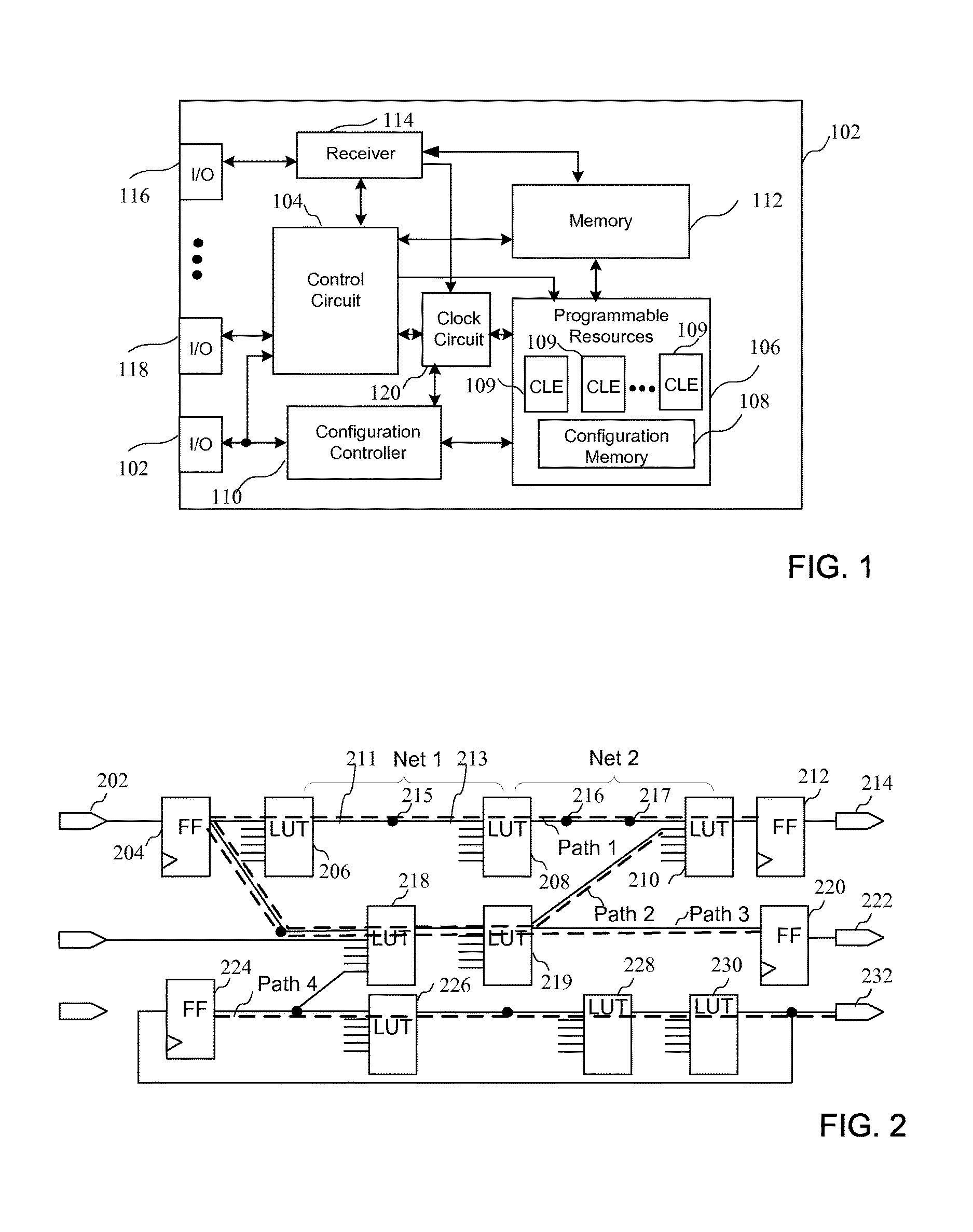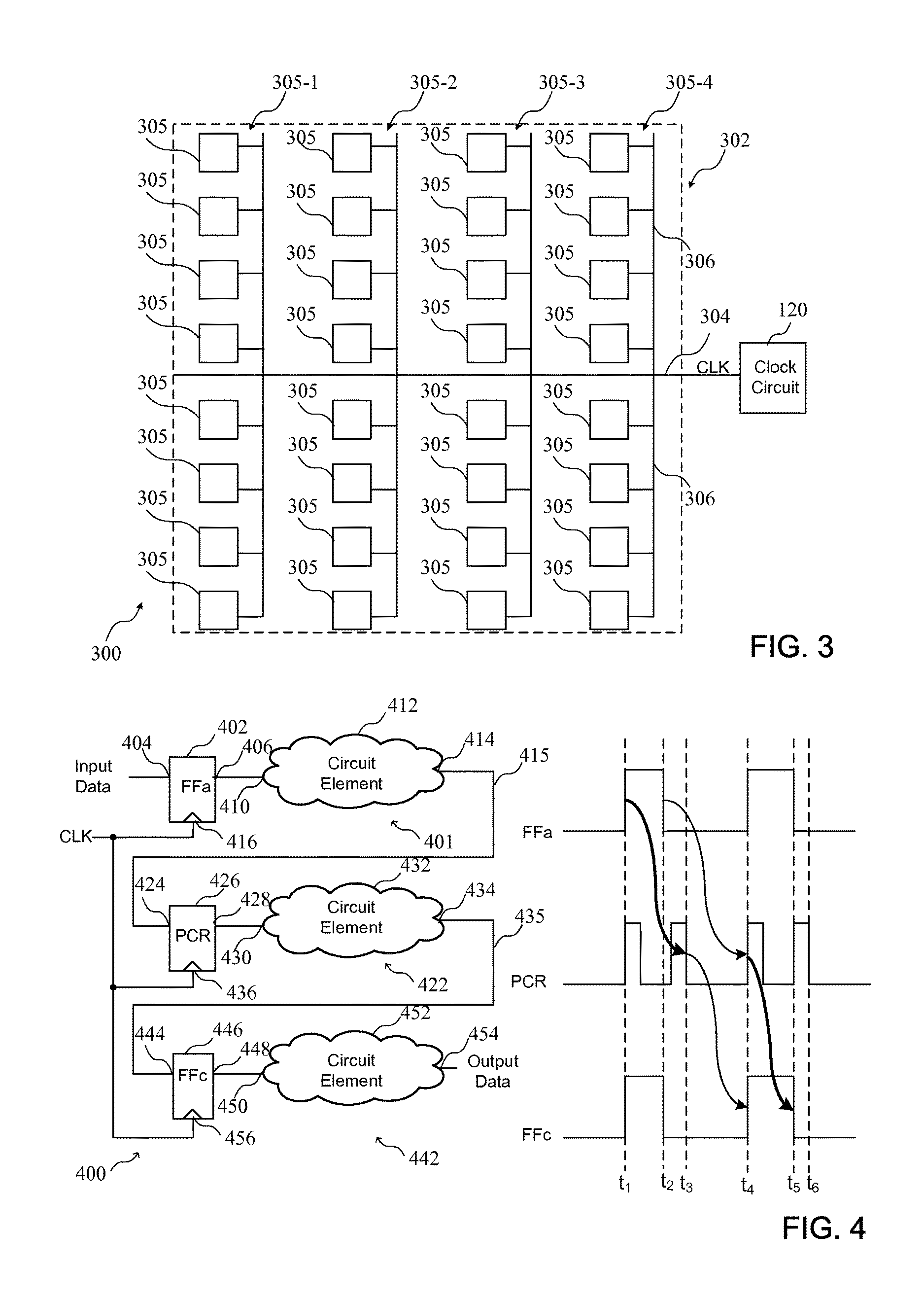Circuits for and methods of reducing duty-cycle distortion in an integrated circuit implementing dual-edge clocking
a dual-edge clocking and integrated circuit technology, applied in the direction of pulse manipulation, pulse technique, generating/distributing signals, etc., can solve the problems of significant power consumption of routing clock signals in an integrated circuit, duty-cycle distortion (dcd) associated with rising and falling edges of clock signals, and the duty cycle of clock signals is created. to achieve the effect of reducing duty-cycle distortion
- Summary
- Abstract
- Description
- Claims
- Application Information
AI Technical Summary
Benefits of technology
Problems solved by technology
Method used
Image
Examples
Embodiment Construction
[0027]The circuits and methods set forth below reduce power consumed by routing clock signals in an integrated circuit, and mitigate the penalty due to duty-cycle distortion when using dual-edge clocking. Dual-edge clocking is used to reduce dynamic power consumed in distributing a clock signal in an integrated circuit by distributing the clock signal at half speed. Pulse-controlled registers that trigger on both rising and falling edges can be selectively implemented to reduce the impact of duty-cycle distortion. That is, a time penalty as a result of duty-cycle distortion can be reduced by ensuring that a pulse generated by a pulse-controlled register is sufficient to provide an offset for the duty-cycle distortion. By way of example, a method of mitigating the penalty due to duty-cycle distortion can include identifying duty-cycle distortion in the clock signal at a clock input of a register, and coupling a pulsed output of a pulse generator, rather than the clock signal exhibiti...
PUM
 Login to View More
Login to View More Abstract
Description
Claims
Application Information
 Login to View More
Login to View More - R&D
- Intellectual Property
- Life Sciences
- Materials
- Tech Scout
- Unparalleled Data Quality
- Higher Quality Content
- 60% Fewer Hallucinations
Browse by: Latest US Patents, China's latest patents, Technical Efficacy Thesaurus, Application Domain, Technology Topic, Popular Technical Reports.
© 2025 PatSnap. All rights reserved.Legal|Privacy policy|Modern Slavery Act Transparency Statement|Sitemap|About US| Contact US: help@patsnap.com



